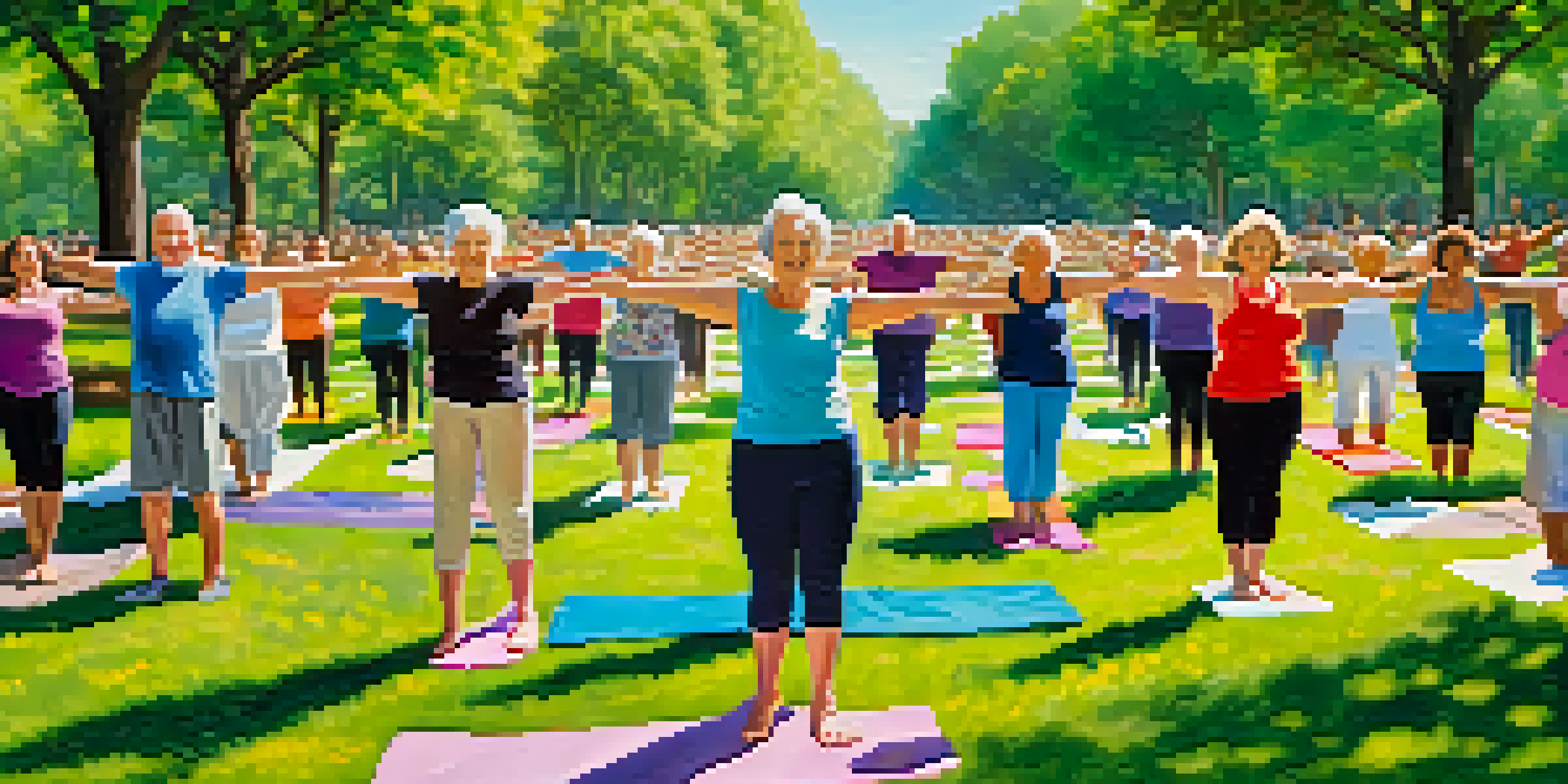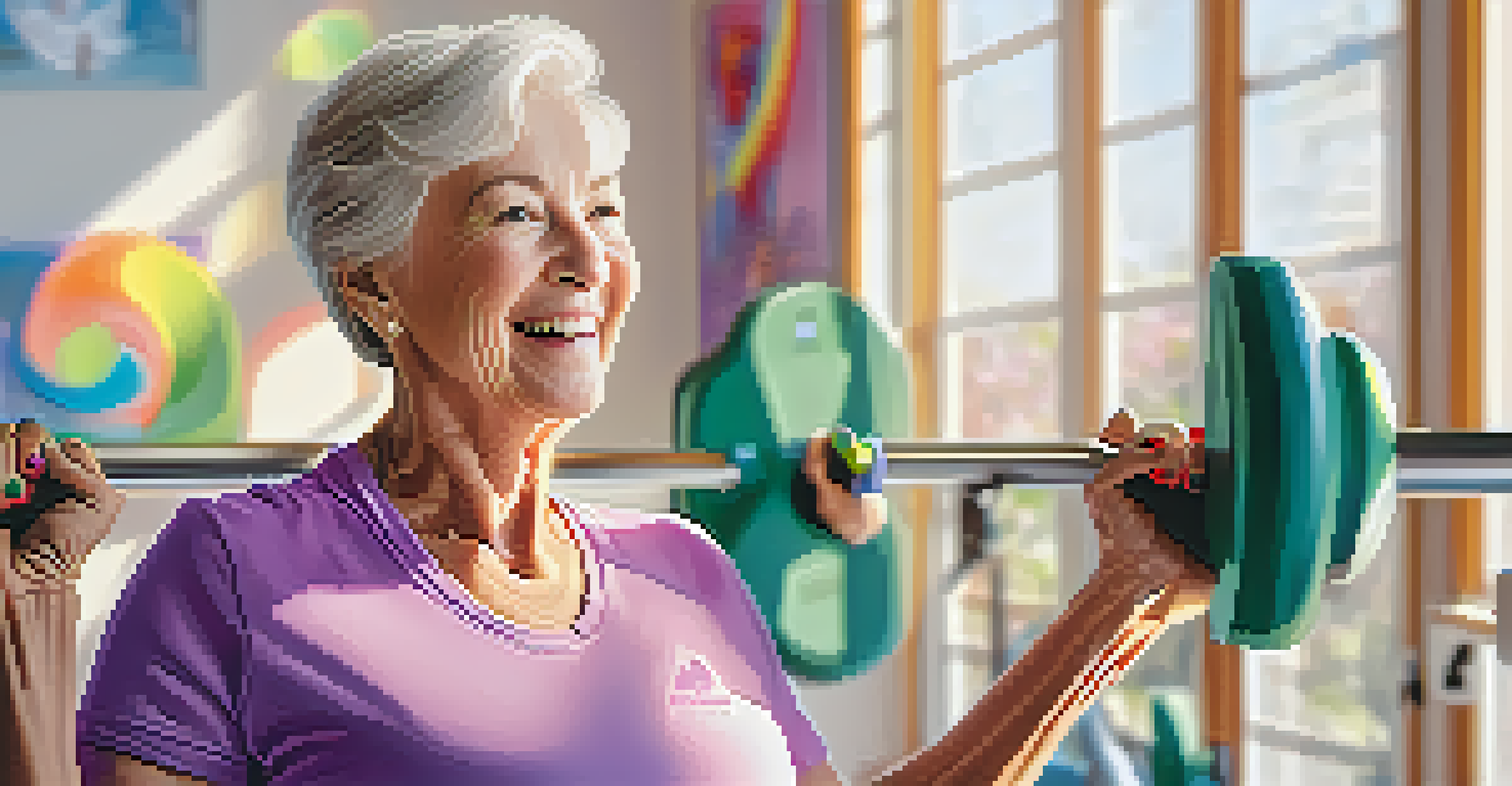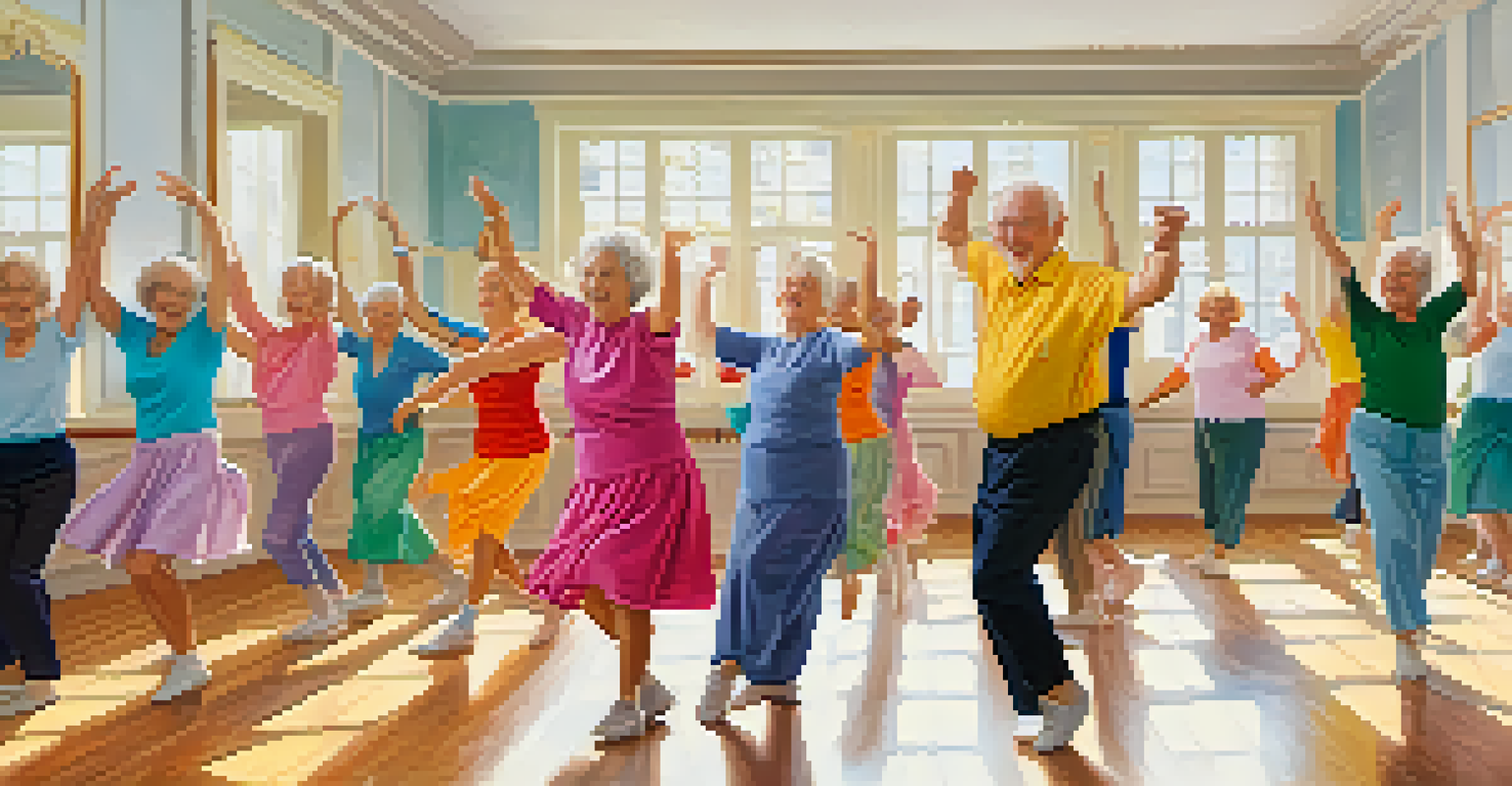The Influence of Exercise on Aging and Longevity

Understanding Aging: A Natural Process We All Face
Aging is an inevitable part of life that affects us all, from our physical appearance to our mental clarity. As we age, our bodies undergo a variety of changes, such as decreased muscle mass, bone density, and metabolism. Recognizing these changes helps us understand how lifestyle choices, especially exercise, can play a crucial role in shaping our health as we grow older.
Aging is not lost youth but a new stage of opportunity and strength.
Interestingly, aging isn't just about the number of candles on our birthday cake; it's also about how well we maintain our health and vitality. Factors like genetics, environment, and lifestyle choices contribute to our aging process. Among these factors, regular physical activity stands out as a powerful tool in combating the effects of aging.
As we delve deeper into the relationship between exercise and aging, we’ll discover that staying active can significantly enhance our quality of life. From promoting cardiovascular health to improving mood, the benefits of exercise extend far beyond just physical appearance.
The Science Behind Exercise and Longevity
Research consistently shows that regular exercise is linked to increased lifespan. Engaging in physical activities not only improves heart health but also reduces the risk of chronic diseases such as diabetes and hypertension. This connection underscores the importance of incorporating movement into our daily routines, regardless of age.

In fact, a study published in the journal 'Circulation' revealed that even small amounts of moderate exercise can lead to significant health benefits. This means that you don't have to run marathons to reap the rewards; a brisk walk or a short bike ride can make a big difference. The key is consistency and finding activities you enjoy.
Exercise Boosts Health and Longevity
Regular physical activity is essential for enhancing life quality and extending lifespan by reducing the risk of chronic diseases.
Moreover, exercise promotes the release of endorphins, the body's natural mood lifters. This can help combat age-related depression and anxiety, making you feel more energetic and engaged in life. So not only does exercise help you live longer, but it also enhances your overall well-being.
Physical Activity: A Pillar of Healthy Aging
Engaging in regular physical activity is one of the most effective ways to support healthy aging. It helps maintain muscle strength, flexibility, and balance, which are essential for preventing falls—a common concern for older adults. Incorporating strength training, stretching, and aerobic exercises can create a well-rounded fitness routine.
The greatest wealth is health.
As we age, our bodies naturally lose muscle mass and bone density, which can lead to frailty. However, studies have shown that older adults who engage in strength training can gain muscle and improve their overall physical function. This not only enhances mobility but also boosts confidence in daily activities.
Additionally, participating in group exercises can foster social connections, combating loneliness often associated with aging. Whether it's a yoga class or a walking group, these activities not only keep you fit but also build a sense of community, all contributing to a longer, healthier life.
Mental Well-being: Exercise as a Mood Booster
While the physical benefits of exercise are widely recognized, its impact on mental health is equally significant. Regular physical activity can enhance cognitive function and decrease the risk of age-related cognitive decline. This means that staying active can help keep your mind sharp as you grow older.
Exercise stimulates the production of neurotransmitters like serotonin and dopamine, which are crucial for mood regulation. Increased levels of these chemicals can lead to improved mood and decreased feelings of anxiety and depression. So, a simple daily workout can be an effective way to boost your mental health.
Mental Health Benefits of Exercise
Engaging in exercise not only improves physical health but also enhances mental well-being, helping to combat anxiety and depression.
Moreover, engaging in activities that require coordination and concentration, such as dancing or martial arts, can further enhance cognitive function. As you challenge your brain through physical activity, you not only strengthen your body but also keep your mind agile.
How Much Exercise Do You Really Need?
You might be wondering, 'How much exercise should I aim for to reap these benefits?' The general recommendation is to get at least 150 minutes of moderate aerobic activity a week, along with muscle-strengthening activities on two or more days. This can sound daunting, but it can easily be broken down into manageable chunks.
For example, you could aim for 30-minute walks five times a week, adding in some light weight training or yoga classes. The key is to find what works for you and fits your lifestyle. Even household chores, like gardening or cleaning, can contribute to your physical activity goals.
Ultimately, what matters most is finding activities that you enjoy and can sustain over the long term. Consistency is crucial; it’s better to engage in shorter, enjoyable sessions than to push yourself too hard and risk burnout or injury.
Overcoming Barriers to Exercise in Older Adults
Despite the clear benefits of exercise, many older adults face barriers that make it difficult to stay active. Common challenges include physical limitations, lack of motivation, or even fear of injury. Addressing these issues is essential for encouraging a more active lifestyle.
One effective strategy is to start small and gradually increase activity levels. For instance, if you’re not used to exercising, begin with short walks and slowly extend the duration or intensity. It's also helpful to seek guidance from fitness professionals who can tailor programs to your needs and abilities.
Overcoming Barriers to Stay Active
Addressing common challenges faced by older adults can encourage a more active lifestyle and foster a sense of community.
Community programs designed for older adults can provide support, motivation, and a sense of belonging. Engaging with others who share similar goals can make the journey to fitness more enjoyable and less intimidating.
Conclusion: Embrace an Active Lifestyle for Longevity
In conclusion, the influence of exercise on aging and longevity is profound and undeniable. By incorporating regular physical activity into your routine, you can enhance your quality of life, boost mental well-being, and increase your lifespan. It’s never too late to start moving!
Remember, the journey toward a healthier lifestyle is not about perfection but about progress. Celebrate your achievements, big or small, and stay curious about new activities you might enjoy. Whether it’s a gentle stretch or a lively dance class, each step counts.

As we age, let's embrace the power of movement together. Make exercise a joyful part of your life, and you’ll not only add years to your life but life to your years.